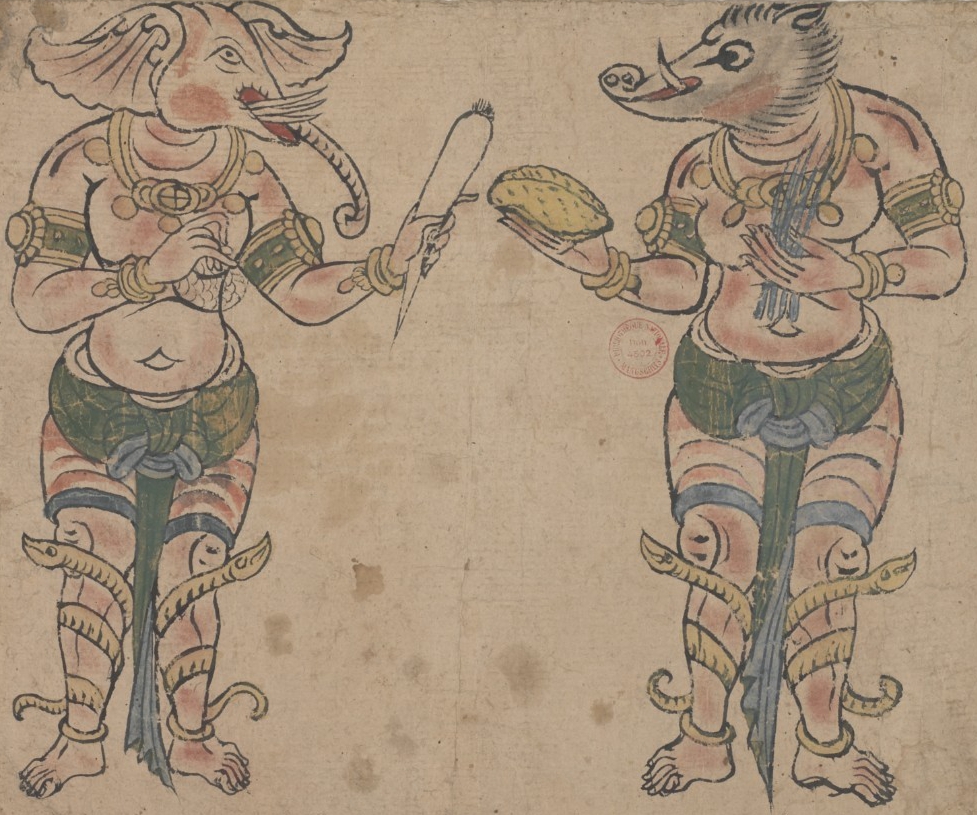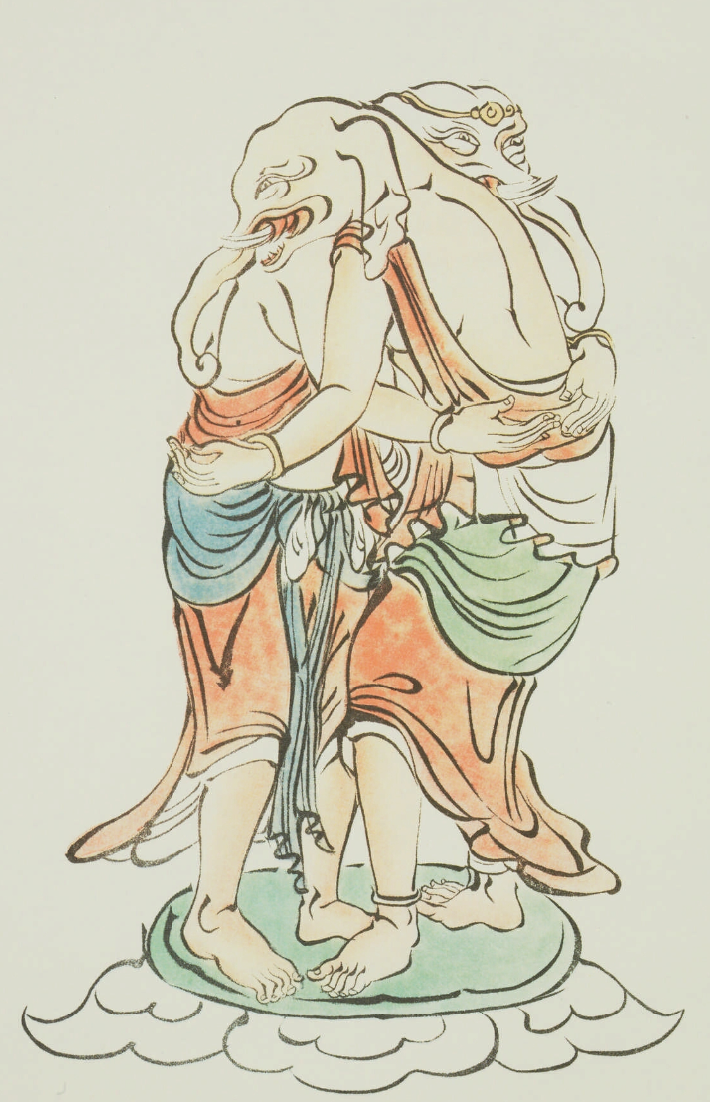apa4s_666
Member
- Joined
- May 9, 2023
- Messages
- 389
Today on February 10, Chinese Zodiac turns into the Year of the Dragon on the Witch's Sabbat. This is a perfect timing to begin this festival, and in the time-frame encompassing the entire Lunar New Year festival, there is a lot of workings that can be done in the days to follow in regards to wealth, romance, feasting and contacting the Gods and working on your inner energies (which also depends on your location). Every Oriental SS should be excited that this is the Year of the Dragon. As a matter of fact, 2024 and 2025 should be prominent years for Oriental SS, since 2025 also happens to be the Year of the Snake or as I'll refer it as the Year of the Serpent.
According to most Chinese astrology sources, the Year of Dragon represents power, ambition, and growth. Cities all across Asia are going wild with their Dragon decorations, some of the most beautiful are the lighted ones. Of most the Gentile world, nobody else outwardly embraces Dragon veneration other than the Orientals, though it's not to say that Orientals are in the "perfect place" per say (with China dealing with communism and Korea with their emigration rates), but the culture is still there.
As a matter of fact, the cardinal directions are even presented as Dragons, and the Gods presented as Dragon Kings who rule lesser legions of Dragons.
Everywhere you go, most East Asian or Southeast Asian-owned business or home, heck even in the flags of many Asiatic empires, you'll see Dragon posters and Dragon statues everywhere. Most traditional Asian clothing too, bears Dragon symbols. It is an extremely important symbol in Chinese and Asian cultures, as well as Satanism in of itself. Even the Ancient Amerindians venerated Dragons, such as Quetzacoatl (Satan represented as a Dragon/Serpent), in a lot of the Amerindian cultures of the USA, Satan the Dragon is presented as Uktena or Sint Holo (or a related name). The "only people" to ever vew the Dragon negatively are the kikes.





Flag of the Qing dynasty (left), second-to-last imperial Chinese dynasty and Seal of the Korean Joseon dynasty (right)


Typical traditional and ancient Chinese dress, although most are color red



Dragon architecture outside of China, Japan (left), Korea (center), Thailand (right).....you can find dozens more of this kind of architecture in Southeast Asia
Lunar New Year is one of the largest Asian celebrations, and while Japan and Korea began their Year of Dragon the same time as the Gregorian New Year; China, Vietnam, Mongolia and the Turkic-speaking peoples celebrates theirs' around late January and early February. In Vietnam it is celebrated as "Tet", and in Mongolia, as well as Mongolic and Turkic-speaking regions of Central Asia and southern Russia, it is celebrated as Tsagan Saar.
Therefore I felt it appropriate to post during the time when most folks are celebrating it.
This is pretty-much what one can consider the "Oriental Yule", at least in terms of the celebrations, it's a time of performing rituals to the Gods, making beautiful art, exchanging presents and eating good food and sending the best and most positive of energies to your familiars. One of the most famous traditions is the "red envelopes", where people put money inside a ornately-designed red envelope and gift it to familiars, friends and etc.



Beautiful Chinese artwork (left and center) and red envelopes (right)

Dragon parade
So the festival lasts from the 10th-24th (public observances last until the 17th according to many sources) and concludes with the Lantern Festival on the 24th, and as stated in the beginning, when one checks the Jos Astro dates the time encompasses, it's packed with days to do workings with improving phsycic power, wealth, partying romance and etc., things that are often associated with Gentile New Year festivals. However, also as stated, this also heavily depends on where you are (important), as the dates for certain workings can shift around, so please check the JoS Astro calendar for your particular area. One of the biggest themes of Lunar New Year is wealth, embracing wealth, embracing fortunes, and practicing Feng Shui, and etc. The 15th of February is a universal date I've seen for most of the locations I checked for JoS astro dates, and other locations also have the 16th some do not. Again, do not rely on this post for dates on workings, please use the JoS Astro calendar for 2024.
Anyways in regards to Lord Bifrons since we are dealing with a New Year-type holiday, sadly he isn't as "prominent" in Chinese religion (at least so far me, and STanBlank haven't really been able to find him), or at least what we know about Chinese religion today, but it's not to say he is "non-existent" in Chinese religion. He is known as "Xiàngtóushén" (象頭神, literally "Elephant Head God"), and the earliest veneration of Bifrons dates back to 531 C.E. It is taken directly from from the Esoteric Buddhist Vināyaka, Vighnāntaka, and Gaṇapati which are all Esoteric Buddhist adoptations of Lord Ganesha from the Vedic religion.
It was directly transliterated by the Chinese as Pínàyèjiā (毘那夜迦), from Vināyaka.

Chinese painting of Vinayaka/Lord Bifrons
In Japanese religion, where he is more prominent, he is known by ''Kangiten'' (歓喜天, "God of Bliss") and Shōten/Shōden (聖天, "Sacred/Noble God") and veneration of Bifrons survived much more in Japan than it did in China. Ganapati appears in Japanese as Ganabachi (誐那鉢底).

Japanese statue of Kangiten
Anyways, keep it fighting Orientals, Happy Year of the Dragon and Hail Satan and Lord Bifrons,

 en.wikipedia.org
en.wikipedia.org

 en.wikipedia.org
en.wikipedia.org

 slife.org
slife.org
According to most Chinese astrology sources, the Year of Dragon represents power, ambition, and growth. Cities all across Asia are going wild with their Dragon decorations, some of the most beautiful are the lighted ones. Of most the Gentile world, nobody else outwardly embraces Dragon veneration other than the Orientals, though it's not to say that Orientals are in the "perfect place" per say (with China dealing with communism and Korea with their emigration rates), but the culture is still there.
As a matter of fact, the cardinal directions are even presented as Dragons, and the Gods presented as Dragon Kings who rule lesser legions of Dragons.
Everywhere you go, most East Asian or Southeast Asian-owned business or home, heck even in the flags of many Asiatic empires, you'll see Dragon posters and Dragon statues everywhere. Most traditional Asian clothing too, bears Dragon symbols. It is an extremely important symbol in Chinese and Asian cultures, as well as Satanism in of itself. Even the Ancient Amerindians venerated Dragons, such as Quetzacoatl (Satan represented as a Dragon/Serpent), in a lot of the Amerindian cultures of the USA, Satan the Dragon is presented as Uktena or Sint Holo (or a related name). The "only people" to ever vew the Dragon negatively are the kikes.




Flag of the Qing dynasty (left), second-to-last imperial Chinese dynasty and Seal of the Korean Joseon dynasty (right)


Typical traditional and ancient Chinese dress, although most are color red



Dragon architecture outside of China, Japan (left), Korea (center), Thailand (right).....you can find dozens more of this kind of architecture in Southeast Asia
Lunar New Year is one of the largest Asian celebrations, and while Japan and Korea began their Year of Dragon the same time as the Gregorian New Year; China, Vietnam, Mongolia and the Turkic-speaking peoples celebrates theirs' around late January and early February. In Vietnam it is celebrated as "Tet", and in Mongolia, as well as Mongolic and Turkic-speaking regions of Central Asia and southern Russia, it is celebrated as Tsagan Saar.
Therefore I felt it appropriate to post during the time when most folks are celebrating it.
This is pretty-much what one can consider the "Oriental Yule", at least in terms of the celebrations, it's a time of performing rituals to the Gods, making beautiful art, exchanging presents and eating good food and sending the best and most positive of energies to your familiars. One of the most famous traditions is the "red envelopes", where people put money inside a ornately-designed red envelope and gift it to familiars, friends and etc.



Beautiful Chinese artwork (left and center) and red envelopes (right)

Dragon parade
So the festival lasts from the 10th-24th (public observances last until the 17th according to many sources) and concludes with the Lantern Festival on the 24th, and as stated in the beginning, when one checks the Jos Astro dates the time encompasses, it's packed with days to do workings with improving phsycic power, wealth, partying romance and etc., things that are often associated with Gentile New Year festivals. However, also as stated, this also heavily depends on where you are (important), as the dates for certain workings can shift around, so please check the JoS Astro calendar for your particular area. One of the biggest themes of Lunar New Year is wealth, embracing wealth, embracing fortunes, and practicing Feng Shui, and etc. The 15th of February is a universal date I've seen for most of the locations I checked for JoS astro dates, and other locations also have the 16th some do not. Again, do not rely on this post for dates on workings, please use the JoS Astro calendar for 2024.
Anyways in regards to Lord Bifrons since we are dealing with a New Year-type holiday, sadly he isn't as "prominent" in Chinese religion (at least so far me, and STanBlank haven't really been able to find him), or at least what we know about Chinese religion today, but it's not to say he is "non-existent" in Chinese religion. He is known as "Xiàngtóushén" (象頭神, literally "Elephant Head God"), and the earliest veneration of Bifrons dates back to 531 C.E. It is taken directly from from the Esoteric Buddhist Vināyaka, Vighnāntaka, and Gaṇapati which are all Esoteric Buddhist adoptations of Lord Ganesha from the Vedic religion.
It was directly transliterated by the Chinese as Pínàyèjiā (毘那夜迦), from Vināyaka.

Chinese painting of Vinayaka/Lord Bifrons
In Japanese religion, where he is more prominent, he is known by ''Kangiten'' (歓喜天, "God of Bliss") and Shōten/Shōden (聖天, "Sacred/Noble God") and veneration of Bifrons survived much more in Japan than it did in China. Ganapati appears in Japanese as Ganabachi (誐那鉢底).

Japanese statue of Kangiten
Anyways, keep it fighting Orientals, Happy Year of the Dragon and Hail Satan and Lord Bifrons,

Ganesha - Wikipedia

Kangiten - Wikipedia

Chinese Folk Religion
Chinese folk religion (Chinese popular religion or traditional Chinese religion) or Han folk religion or Shenism is the religious tradition of the Han Chinese
 slife.org
slife.org




 Happy Year of the Dragon to you and the people of China. May you and
Happy Year of the Dragon to you and the people of China. May you and